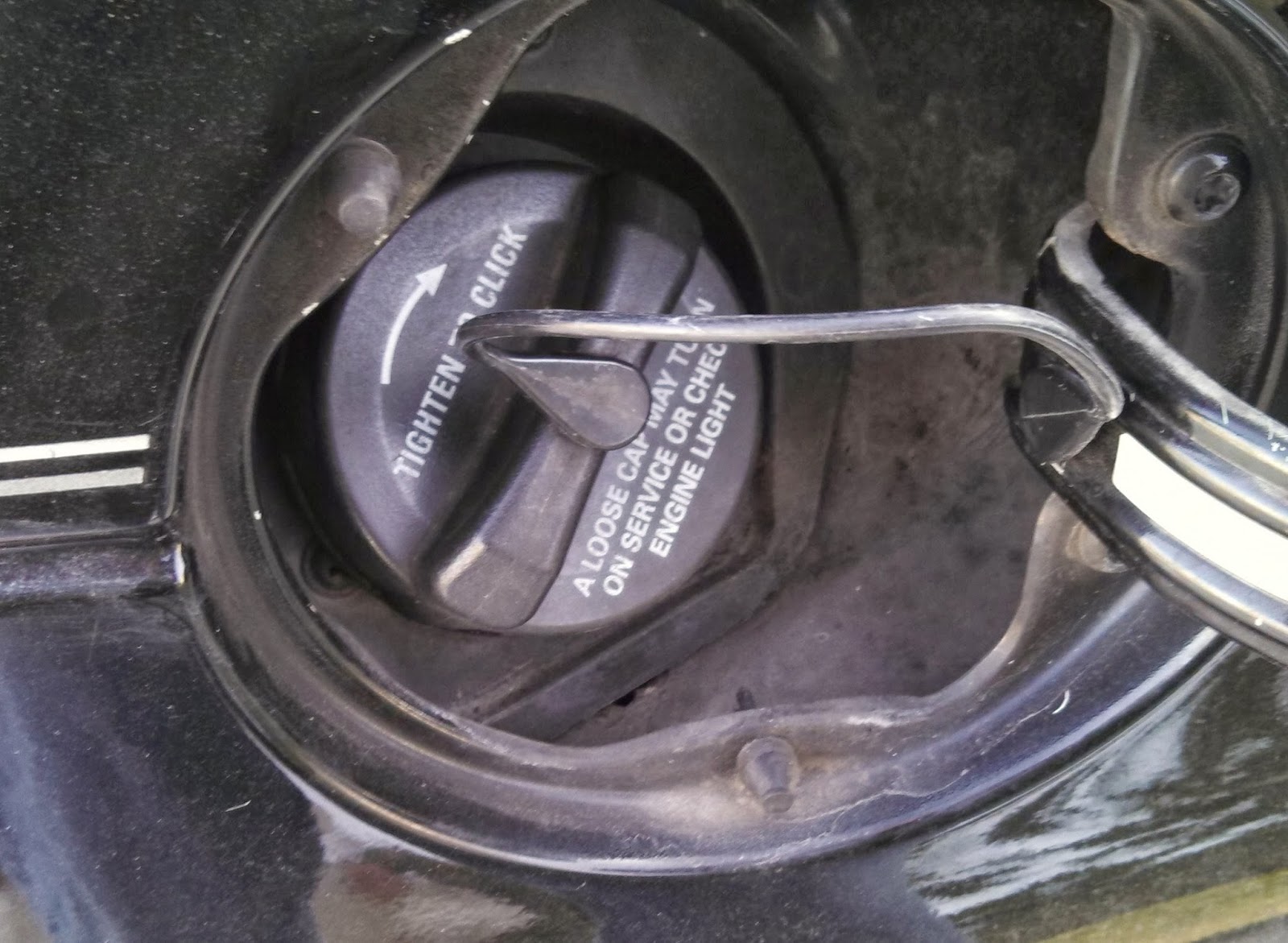Decoding the Mystery of a Check Engine Light: Is Your Gas Cap the Culprit?
Have you ever experienced that unsettling moment when your car's check engine light illuminates, casting a shadow of doubt over your otherwise smooth commute? It's a universal symbol of automotive anxiety, a cryptic message from your vehicle's inner workings. While the possibilities behind a glowing check engine light can range from minor hiccups to significant mechanical maladies, one surprisingly common culprit often goes overlooked: the humble gas cap.
Yes, that seemingly insignificant piece of plastic can be the source of your automotive woes. A loose, damaged, or missing gas cap can trigger the check engine light, sending you into a spiral of worry and potential repair bills. But before you succumb to panic, take a deep breath and delve into the subtle art of gas cap diagnostics. Understanding this often-overlooked connection can save you time, money, and unnecessary stress.
The check engine light, also known as the malfunction indicator lamp (MIL), is part of your car's onboard diagnostic system (OBD-II). This system continuously monitors various aspects of your engine's performance, emissions, and other vital functions. When it detects a potential problem, it illuminates the check engine light to alert you. In the case of a faulty gas cap, the system senses a leak in the fuel system, which can lead to evaporative emissions and reduced fuel efficiency. This triggers the check engine light, signaling a potential issue.
The advent of the OBD-II system and the subsequent link between a faulty gas cap and the check engine light was a significant step towards cleaner air. Before this technology, fuel system leaks often went undetected, contributing to air pollution. By alerting drivers to a potential leak through the check engine light, the OBD-II system helps to minimize evaporative emissions and promote environmental responsibility.
Ignoring a check engine light related to a gas cap issue can have several repercussions. Beyond the environmental impact, a loose or damaged gas cap can reduce your fuel economy, costing you more at the pump. It can also lead to further damage to the evaporative emissions system, potentially requiring more extensive and expensive repairs down the line. Therefore, addressing a gas cap-related check engine light promptly is essential for maintaining both your vehicle's health and your wallet.
A simple test is to ensure the cap is tightened until you hear a click. If the light persists after a few driving cycles, inspect the cap for cracks or damage. Replace if necessary. A code reader can confirm the specific error code.
Benefits include: Early detection of fuel system leaks, improved fuel economy, and reduced emissions.
Action Plan: Check the cap, tighten or replace. Reset the check engine light (if comfortable) or visit a mechanic. Example: A driver noticed the light, tightened the cap, and the light turned off after two days.
Checklist: Is the cap tight? Is the cap damaged? Has the light turned off after several drives?
Step-by-step: 1. Stop the car. 2. Check the gas cap. 3. Tighten or replace. 4. Monitor the check engine light.
Advantages and Disadvantages of Check Engine Light for Gas Cap Issues
| Advantages | Disadvantages |
|---|---|
| Early problem detection | Can be triggered by minor issues |
| Prevents further damage | Can cause anxiety |
Best Practices: 1. Regularly check your gas cap. 2. Tighten until it clicks. 3. Inspect for damage. 4. Replace when needed. 5. Don't ignore the check engine light.
FAQs: 1. Why is my check engine light on? A loose gas cap is a common cause. 2. Can I drive with the light on? It's best to address it promptly. 3. How do I reset the light? Consult your owner's manual or a mechanic.
Tips: Always tighten your gas cap completely. Replace a damaged cap immediately.
In conclusion, the seemingly insignificant gas cap plays a crucial role in maintaining your vehicle's efficiency and minimizing its environmental impact. Understanding the connection between a faulty gas cap and the check engine light empowers you to address this common issue promptly and effectively. By heeding the warning signs and taking proactive steps, you can prevent further damage, save money on fuel, and contribute to a cleaner environment. Don't underestimate the power of a properly sealed fuel system. Take control of your car's health and embrace the simplicity of a tight gas cap. Ignoring this seemingly small detail can lead to bigger problems down the road. Take action today, and experience the peace of mind that comes with a well-maintained vehicle.
Unlocking your mercury boat motors secrets
Seamless sock bliss the ultimate guide to toe seam free socks for women
The ultimate stormy monday deconstructing the blues classic

Gas And Electric Bill Cap at Jim Elkins blog | Innovate Stamford Now

Will Check Engine Light Turn off by Tightening Gas Cap | Innovate Stamford Now

Symptoms Of A Bad Gas Cap On A Car | Innovate Stamford Now
Gas Cap Check Engine Light | Innovate Stamford Now

Gas Cap Causing a Check Engine Light | Innovate Stamford Now

Check Engine Light Came On After Getting Gas | Innovate Stamford Now

No Gas Cap Check Engine Light at Hope Taylor blog | Innovate Stamford Now

Check Engine Light From Gas Cap | Innovate Stamford Now

Gas Cap Engine Light Code | Innovate Stamford Now

Gas Cap Check Engine Light Reset | Innovate Stamford Now

Fix Gas Cap Check Engine Light | Innovate Stamford Now

Gas Cap Light Will Not Go Off at Savannah Goldman blog | Innovate Stamford Now

Reset Check Engine Light 2000 Ford Ranger | Innovate Stamford Now

Gas Cap Causing a Check Engine Light | Innovate Stamford Now

What Are The Signs of a Defective Gas Cap | Innovate Stamford Now